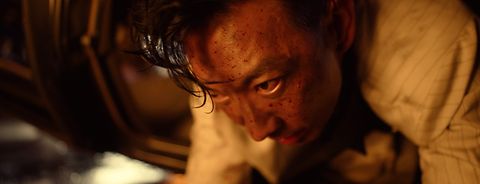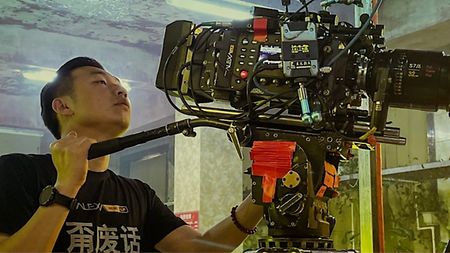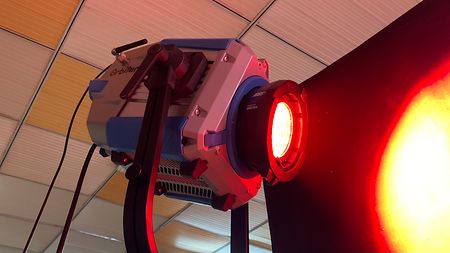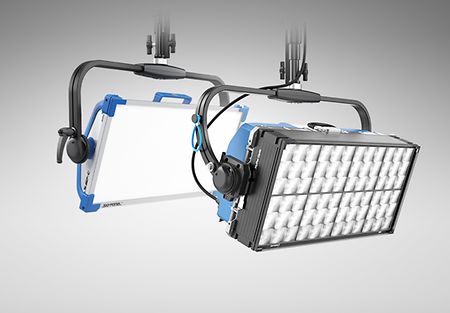What lights are used in this project?
In terms of lights, we are using conventional HMIs and tungsten. However, the rental house also provided us with two new ARRI Orbiter LEDs. The Orbiter’s accessories are a set of 15º, 30º, 60º open face optics. We also have a DoPchoice S lantern, matched with the widely used SkyPanel series S30, S60, S360 LED, plus a full-color LED tube with wireless signal transmitters. With these tools, we were able to build a small-scale DLT digital lighting system.
The protagonists and villains of this movie have very distinct personalities. How do you use lighting to shape these characters?
The character played by Jordan Chan used to be a gangster in a previous life. In this story, however, he tries to pursue a more stable and ordinary existence; this character’s state lies on a spectrum from plain to explosive. The villain, played by Sam Lee, wants to avenge his brother but also has obvious behavioral motives. The light quality is mostly diffused light. Overhead lighting is dominant to create shadows over the character’s eyes, to hide their gaze. At the same time, we follow the actor’s performances as they raise and lower their heads to find the most vivid expression of the characters.
Could you give an example of a lighting challenge you ran across while filming and how you were able to resolve it?
On the third day of shooting, there was a semi-enclosed scene with a window in the room. It was necessary to create a gloomy atmosphere but with the presence of sunlight. The scene was less affected by the sky, but it was not a completely enclosed interior. I installed a 30º reflector on the fixture so that the light could completely wrap the window. Orbiter’s direct light power surpassed the HMI; it provided a very directional base light for the scene. With the Orbiter as our base light, traditional light diffusion was possible. Whether it is soft light or direct light, Orbiter is able to provide strong directional illumination. At the same time, when the 15º reflector is replaced, the range of lighting is very small, saving time and the amount of equipment it took in the past to block light with various black flags. The menu in Orbiter’s controller is also available in Chinese, and the connection lines are long enough. You can quickly adjust the color temperature, color gel, and programming.







